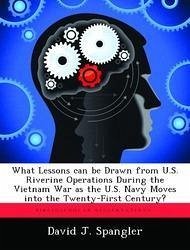
What Lessons Can Be Drawn from U.S. Riverine Operations During the Vietnam War as the U.S. Navy Moves Into the Twenty-First Century?
Versandkostenfrei!
Versandfertig in über 4 Wochen
52,99 €
inkl. MwSt.

PAYBACK Punkte
26 °P sammeln!
This study examines U.S. riverine force operations in the Vietnam War to determine why the force was established, how and why it evolved, and what significance it held for the war as a whole. This study begins with Operation Game Warden, continues through Mobile Riverine Force operations, and ends with the completion of the SEALORDS campaign. The impetus for this research arose from the current debate in Washington as to whether or not the U.S. military has a real need for riverine forces and if those forces should be "stood up" today. Looking back through history gives an opportunity to view ...
This study examines U.S. riverine force operations in the Vietnam War to determine why the force was established, how and why it evolved, and what significance it held for the war as a whole. This study begins with Operation Game Warden, continues through Mobile Riverine Force operations, and ends with the completion of the SEALORDS campaign. The impetus for this research arose from the current debate in Washington as to whether or not the U.S. military has a real need for riverine forces and if those forces should be "stood up" today. Looking back through history gives an opportunity to view past riverine warfare conducted by the American military and determine the contributions such operations have made to the overall conduct of wars. This study shows that riverine operations have been crucial to success in certain environments in the past and points to their possible use in similar environments today. This study measures the effect of U.S. riverine operations in Vietnam and evaluates the contribution this type of force made to our war effort in that environment. This study promotes the use of Task Force 194, which conducted the SEALORDS campaign, as the model for establishing U.S. riverine forces today. This study points out that the nucleus of a riverine force must be maintained, doctrine modernized, and crew currency maintained in order to have any reasonable expectation for success at the outset of future riverine conflicts.


